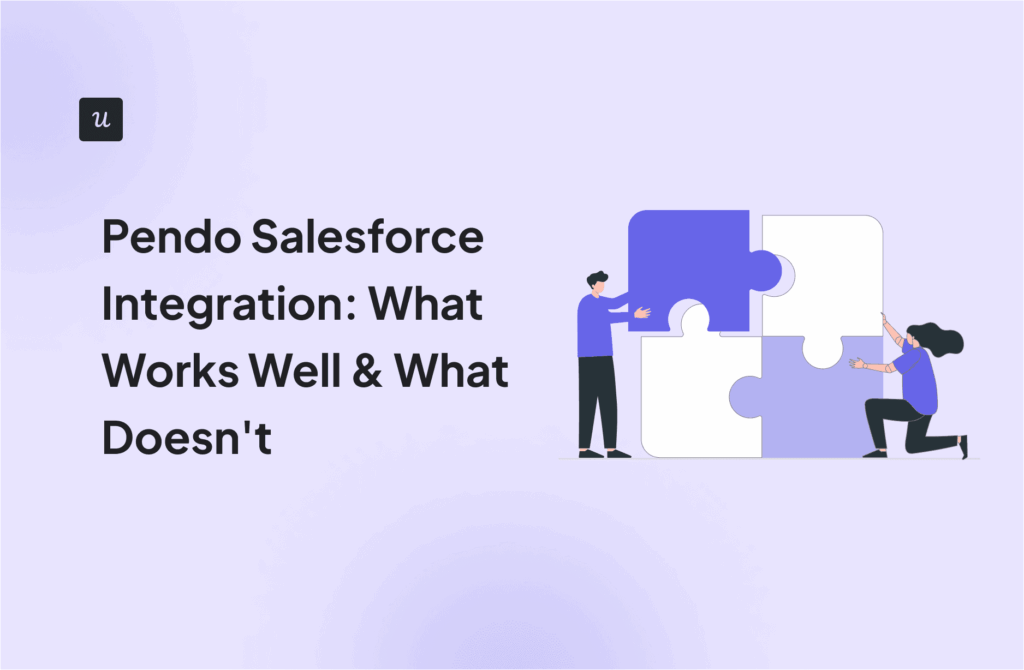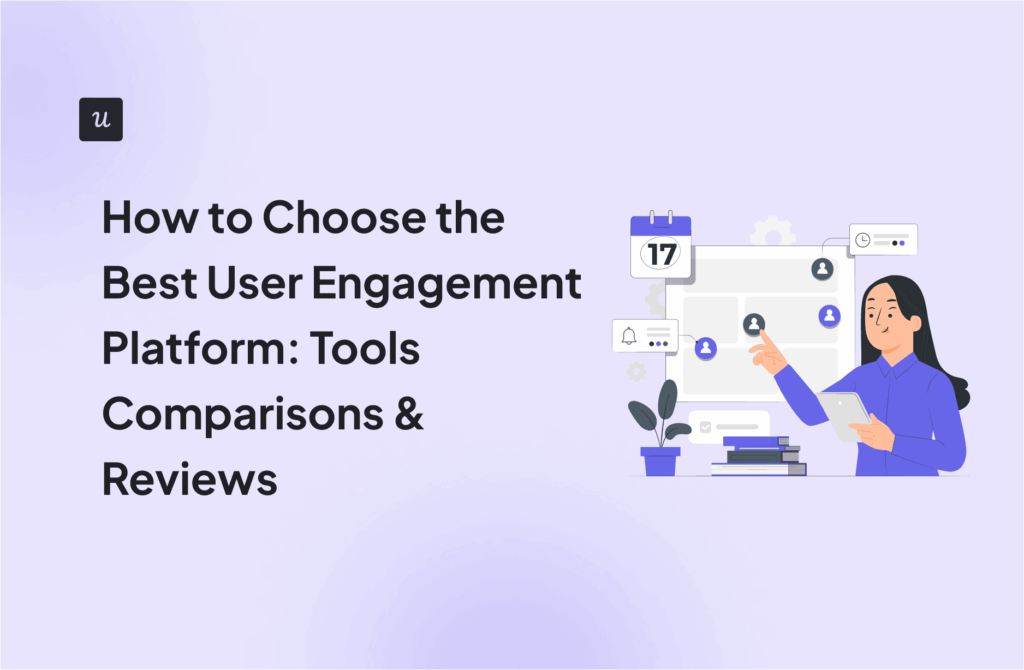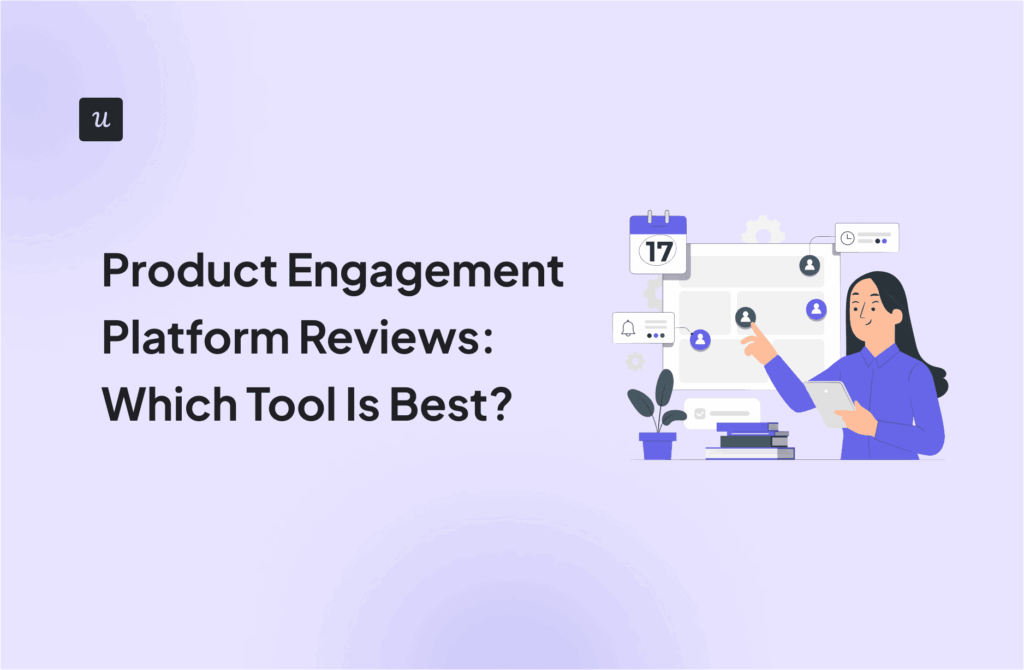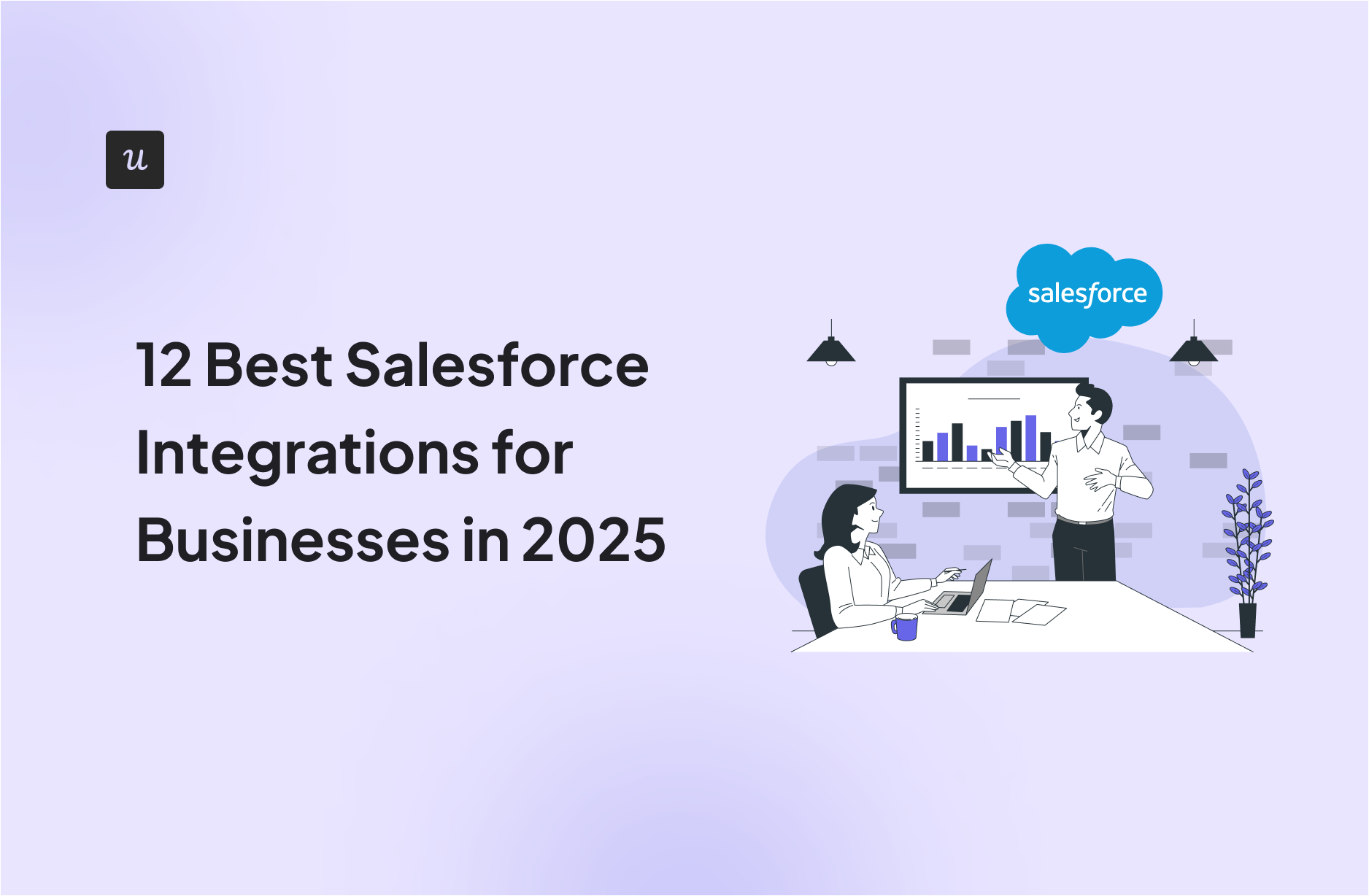
What are the best Salesforce integrations in 2025?
In the article, we look at 12 solid contenders for this title, covering a few most common use cases:
- In-app user engagement
- Sales funnel management
- Customer support
- Analytics and reporting
- Marketing
- Collaboration and project management
Let’s dive right in!
Try Userpilot Now
See Why 1,000+ Teams Choose Userpilot

TL;DR
- Salesforce integrations connect the CRM with other platforms to enhance functionality, streamline operations, and improve data sharing.
- Salesforce can be integrated through native integrations, 3rd party integrations, custom integrations, Salesforce Connect, and data integration platforms like Zapier.
- There are only a few native integrations but Salesforce hosts over 2,500 apps on the Salesforce AppExchange.
- Thanks to the Gong<>Salesforce integration you can use AI-generated insights from user communications in Salesforce for improved sales strategies.
- With the Marketo and Salesforce integration, organizations can better align marketing and sales processes for improved lead management and marketing campaign personalization.
- Value Analytics is a native Salesforce app that provides deep insights into customer engagement and interactions within Salesforce.
- The ActiveCampaign integration boosts marketing personalization and sales funnel automation by syncing data, leads, and contacts between the tools.
- The Mailchimp<>Salesforce Integration allows users to manage email campaigns directly within Salesforce and use Salesforce data for better subscriber segmentation.
- The Acrobat Sign and Salesforce integration enables electronic signatures, document tracking, and automatic record updates within Salesforce.
- By integrating Slack and Salesforce, organizations can receive real-time Salesforce update notifications in Slack and link customer interactions with Salesforce records.
- The Stripe<>Salesforce integration synchronizes payment data between Stripe and Salesforce, allowing for the management of subscriptions, invoices, and payment analytics directly within Salesforce.
- The Resource Hero integration optimizes sales rep productivity by enabling detailed time tracking and resource allocation inside Salesforce.
- With the Asana and Salesforce integration, businesses enhance cross-team collaboration and align specific project tasks with sales cycle stages.
- The Odaseva integration provides enterprise-grade data governance, backup, and compliance solutions for Salesforce.
- The Userpilot<>Salesforce integration allows teams to engage customers effectively by leveraging synced data from both platforms for targeted campaigns and personalized user experiences. Book the demo to find out more!
What are Salesforce integrations?
A Salesforce integration is the process of connecting the Salesforce CRM with other software applications, systems, or platforms.
Its purpose is to enhance functionality, streamline operations, and improve data sharing across multiple systems and tools. Integrations allow organizations to automate their workflows, synchronize data, and add capabilities beyond what Salesforce offers out of the box.
How to integrate Salesforce with other platforms?
There are 5 main ways to integrate Salesforce with other tools:
- Native integrations – require minimal setup and include tools like Google Cloud, Slack, MailChimp, DocuSign, and Jira.
- 3rd party integrations – connections made by external partners or platforms, available on the Salesforce AppExchange.
- Custom integrations – developed specifically for an organization’s unique requirements and needs.
- Salesforce Connect – an integration tool that displays external data as if it were stored in Salesforce.
- Data integration and API platforms like Zapier, Workato, or MuleSoft.
How many integrations does Salesforce have?
While there are only a handful of native Salesforce integrations, you’re most likely to find what you need in the Salesforce AppExchange.
There are currently over 2,500 apps available but the number is growing. Salesforce is used across various industries and developers are constantly adding new 3rd party integrations to extend Salesforce functionality.
12 best Salesforce integrations for connecting your existing data
With the basics out of the way, let’s look at 12 robust Salesforce integrations covering a range of use cases.
1. Userpilot and Salesforce integration – Best for optimizing in-app customer experience
Userpilot is a product growth platform used for in-app user onboarding and customer engagement. It allows teams to analyze user behavior inside the app, collect customer feedback, and engage users with in-app experiences to drive activation and product adoption.
The 2-way integration with Salesforce enables you to seamlessly sync all your data between the two apps. In practice, this means you can:
- Send data about user interactions and survey responses to Salesforce for improved targeting of email campaigns.
- Trigger in-app experiences in response to changes in the user or company properties in Salesforce.
- Use Salesforce data to create better user segments for more granular analysis.
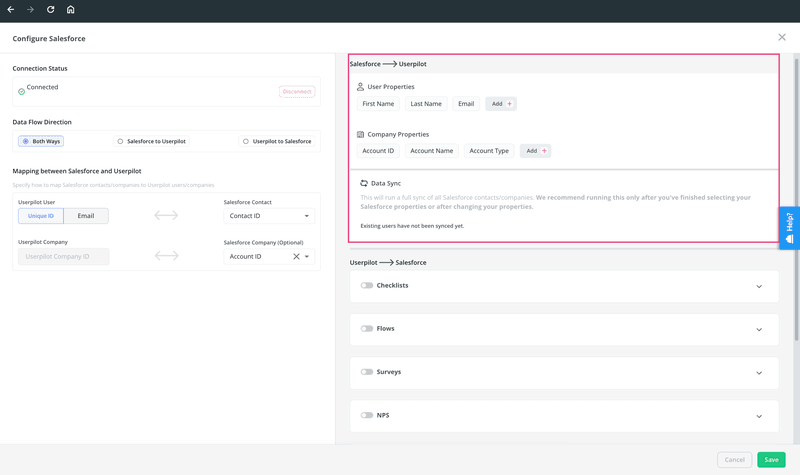
Pricing
Userpilot has 3 pricing plans:
- Starter – from $299/month, billed annually.
- Growth – custom pricing.
- Enterprise – custom pricing.

G2 rating
4.6/5
2. Gong and Salesforce integration – Best for customer interaction management
Gong is a revenue intelligence platform designed to help sales teams improve their sales processes and outcomes through data-driven insights.
It uses AI and machine learning to analyze customer interactions across multiple channels, including phone calls, emails, video conferences, and messaging platforms. This helps sales representatives understand what strategies work best to close more deals.
The Gong integration lets teams push data like rep stats, Topics, and Trackers into Salesforce, and link them to relevant accounts, contacts, and leads.
It provides teams with insights into deals’ health and progress and helps them develop customized sales strategies.
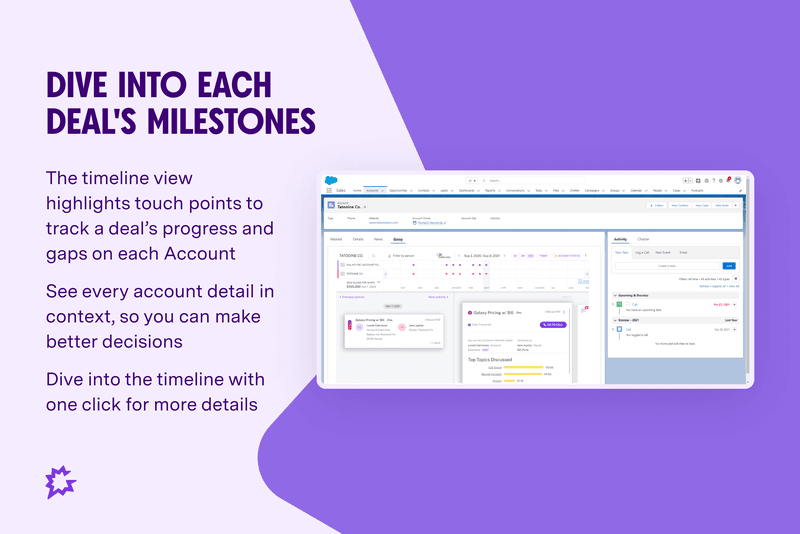
Pricing
Gong charges you per user, and the cost depends on the kind of license you use. For details, you need to contact their sales team.
G2 rating
4.7/5
3. Marketo and Salesforce integration – Best for lead optimization
Marketo is a comprehensive marketing platform designed to help organizations automate and measure marketing engagement, tasks, and workflows.
It allows marketers to streamline their marketing processes, drive efficient lead management, and create personalized marketing campaigns across multiple channels.
The Salesforce and Marketo integration synchronizes data between the two systems to improve alignment between marketing and sales and allow them to make better-informed decisions. This enhances:
- Lead scoring and nurturing
- Customer segmentation and campaign personalization
- Campaign progress tracking
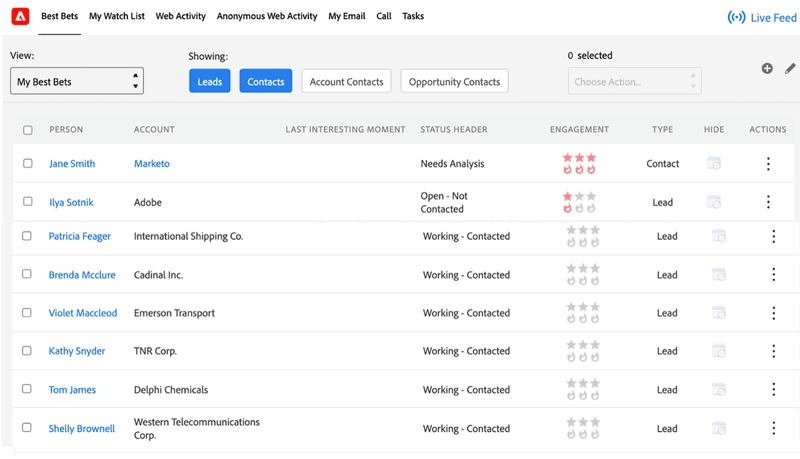
Pricing
Merkato comes with custom pricing.
G2 rating
4.1/5
4. Value Analytics and Salesforce integration – best for analyzing customer data
Value Analytics is a Salesforce Analytics app designed to provide teams with insights into customer engagement and behavior.
It allows organizations to visualize adoption metrics, and track user interactions with features, functions, and pathways within sales and service environments.
With the seamless integration between Value Analytics and Salesforce, organizations can:
- Access and analyze detailed adoption metrics directly within Salesforce.
- Enhance decision-making with insights into user performance and engagement.
- Customize dashboards and reports for specific business needs.
- Leverage Salesforce’s Einstein Analytics for advanced predictive insights and intelligent recommendations.
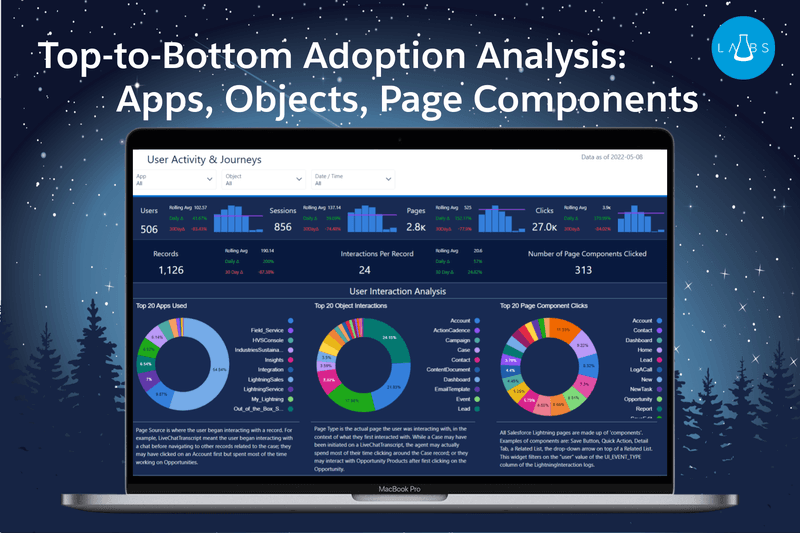
Pricing
The app is free to download for Salesforce users.
G2 rating
No rating or review is available.
5. ActiveCampaign and Salesforce integration – Best for marketing automation
ActiveCampaign is a cloud-based marketing platform for improved marketing and sales automation.
It enables businesses to craft personalized customer experiences across various channels, helping to attract, engage, and retain customers more effectively.
The ActiveCampaign Salesforce integration enables 2-way data, lead, and contact synchronization between the two systems for better alignment of the sales and marketing efforts.
It allows teams to create personalized email marketing campaigns across all touchpoints, and automate the sales funnel by sending targeted emails, texts, and social and chat messages to leads straight from Salesforce.
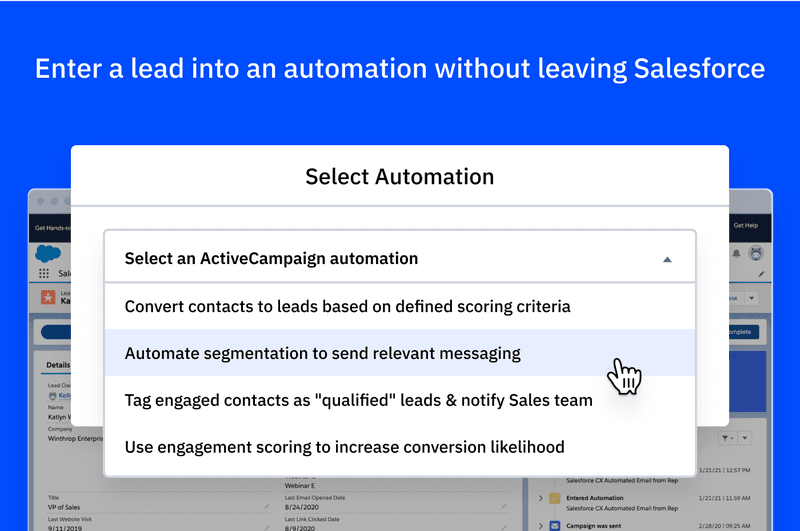
Pricing
There are 3 ActiveCampaign pricing plans:
- Lite – from $29/month
- Plus – from $49/month
- Professional – from $149/month
- Enterprise – from $259/month
G2 rating
4.5/5
6. Mailchimp and Salesforce integration – Best for email marketing
Mailchimp is a platform with robust email marketing capabilities.
It allows users to design, send, and track email campaigns, set up automated email sequences based on subscriber behavior or other triggers, and analyze their performance with insights into open and click-through rates, and subscriber activity.
Thanks to the 2-way Mailchimp and Salesforce integration, teams can:
- View and manage email campaigns and subscriber lists from Salesforce.
- Import Salesforce contact to Mailchimp.
- Use Mailchimp subscribers as Salesforce leads,
- Use Salesforce data to build segments in MailChimp.
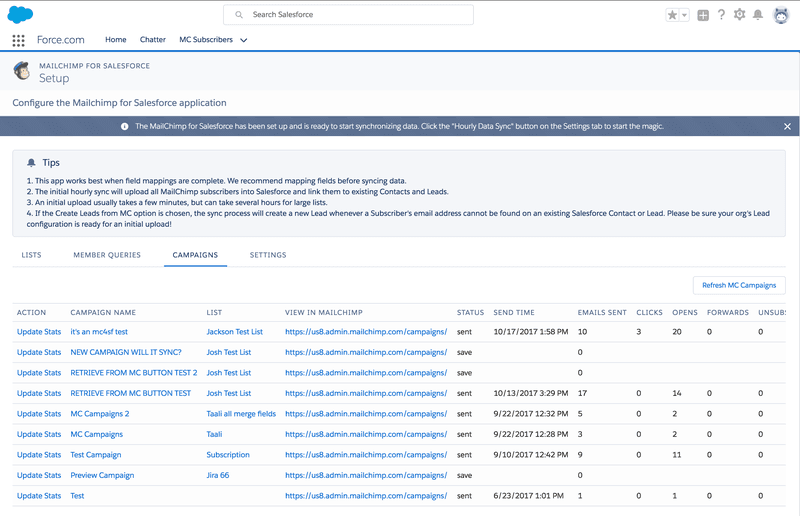
Pricing
MailChimp offers 4 plans:
- Free
- Essentials – from $13/month
- Standard – from $20/month
- Premium – from $350/month
G2 rating
4.3/5
7. Acrobat Sign and Salesforce integration – Best for creating digital workflows
Adobe Sign, part of Adobe Document Cloud, is a cloud-based e-signature service that allows users to send, sign, manage, and archive documents electronically.
Integrating Acrobat Sign with Salesforce enables businesses to create seamless, digital workflows for document management directly within Salesforce. This integration enables business users to:
- Quickly send documents for signature and track their status without leaving Salesforce.
- Automatically update Salesforce records once a document is signed, ensuring data accuracy.
- Enhance customer experience with fast, secure, and legally binding e-signatures.
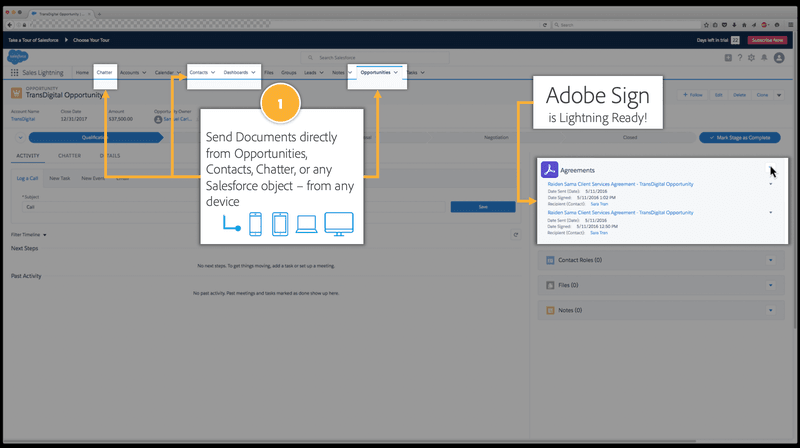
Pricing
There are 4 Adobe Sign plans: 2 for individual users and 3 for businesses. The latter are:
- Acrobat Standard for teams – from $14.99/month
- Acrobat Pro for teams – from $23.99/month
- Acrobat for enterprises – custom pricing
G2 rating
4.4/5
8. Slack and Salesforce integration – Best for internal communication
Slack is a messaging app for businesses that allows teams to reduce the number of emails sent and time spent in meetings. Its powerful features include groups (channels), direct messaging, file sharing, voice and video calls, and searchable history.
Slack integrates with Salesforce to facilitate better internal communication and collaboration. This integration helps teams stay informed about Salesforce updates directly within Slack, enabling:
- Real-time Slack notifications about Salesforce record updates or new opportunities.
- The ability to search and share Salesforce records in Slack.
- The option to connect customer interactions and internal conversations with related Salesforce records.
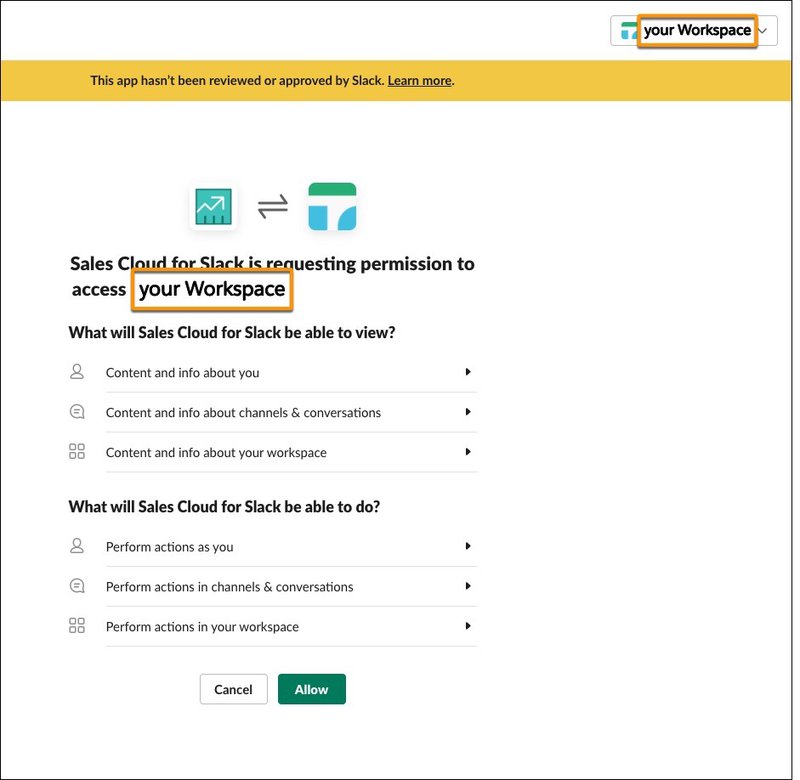
Pricing
Slack offers 4 plans, including a free one. The paid plans are:
- Standard – from $7.25 per active user
- Plus – from $12.50 per active user
- Enterprise Grid – custom pricing
G2 rating
4.5/5
9. Stripe and Salesforce integration – Best for synchronizing payment data
Stripe is a leading online payment processing platform. It allows businesses to accept payments in multiple currencies, supporting a wide range of payment methods. It also offers tools for managing recurring payments and subscriptions.
Stripe integrates with Salesforce to synchronize payment and customer data. This integration allows businesses to:
- Automatically create Stripe Subscriptions from Salesforce.
- View invoices and subscriptions from Salesforce.
- Receive real-time updates in Salesforce for transactions processed through Stripe.
- Enhance reporting capabilities within Salesforce for sales and payment analytics.
- Improve customer data management by linking Stripe payments to Salesforce records.
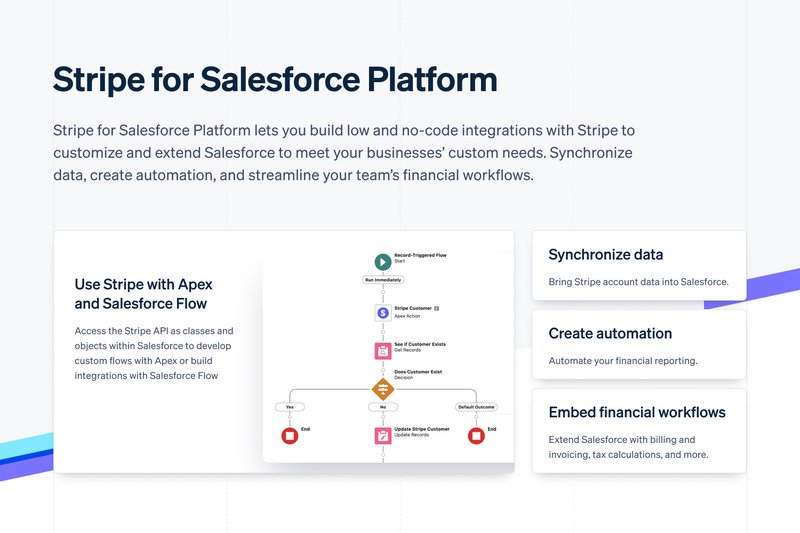
Pricing
Stripe uses a pay-as-you-go pricing model, with rates starting at 1.5%+30c. For businesses with large payment volumes, however, the custom plan will be most suitable.
G2 rating
4.3/5
10. Resource Hero and Salesforce integration – Best for optimizing the productivity of sales reps
Resource Hero is a resource management tool that allows teams to allocate resources effectively, monitor their utilization, and forecast future demand. This is particularly valuable for teams involved in multiple service projects sharing the same pool of resources.
Resource Hero is a native Salesforce app which means seamless operation within the Salesforce environment and better data consistency, security, and reliability.
The integration enables:
- Detailed time tracking against projects and tasks within Salesforce.
- Visualization of sales reps’ availability and assignments within Salesforce for more efficient resource allocation.
- Detailed reporting on resource utilization, project progress, and time tracking.
- Forecasting and planning of teams’ workloads directly from Salesforce.
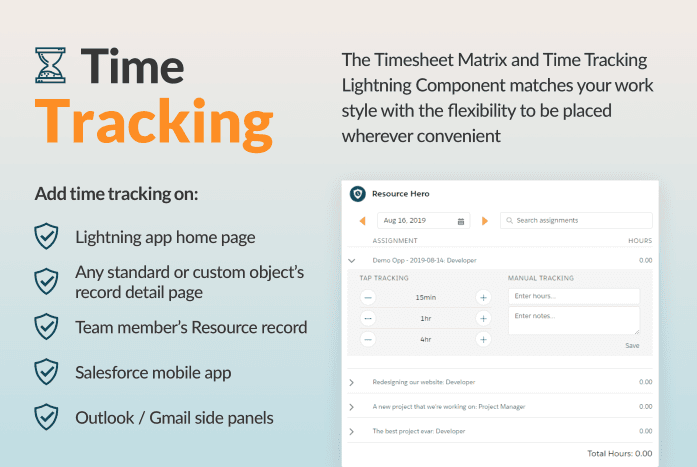
Pricing
The Resource Hero pricing structure is simple. There’s one plan, $15/user/month.
G2 rating
4.0/5
11. Asana and Salesforce integration – Best for project management
Asana is a well-known project management platform. It enables teams to create projects, assign work to teammates, prioritize and track tasks, define deadlines, set Goals, and communicate about tasks directly within the app.
The tool acts as a hub for team collaboration, helping teams improve productivity and organization.
Asana’s integration with Salesforce allows organizations to:
- Automatically create Asana tasks and projects corresponding to different sales cycle stages.
- Dismantle roadblocks and data silos by helping teams from across the organization share information and coordinate activities.
- Automatically link deal progress to Asana goals for informed business decision-making.
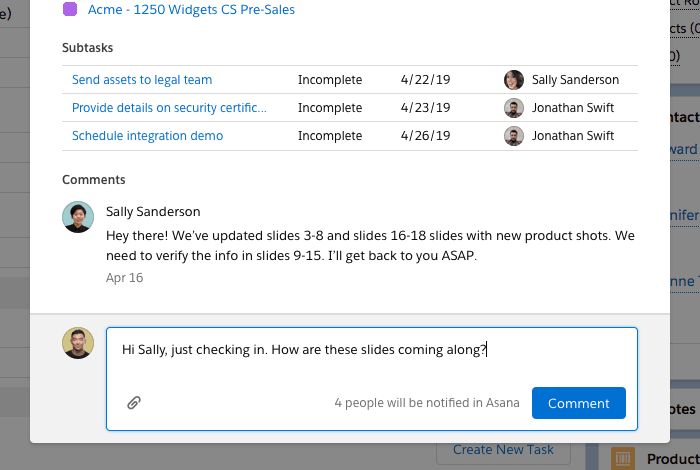
Pricing
Asana has 4 pricing plans apart from a Personal free plan:
- Starter – from $10.99/user/month
- Advanced – from $24.99/user/month
- Enterprise – custom pricing
- Enterprise+ – custom pricing
G2 rating
4.3/5
12. Odaseva and Salesforce integration – Best for backing all your customer data
Odaseva is a cloud-based platform designed to provide enterprise-grade data governance, backup, and compliance solutions for organizations using Salesforce.
It offers a comprehensive suite of tools to help businesses protect their Salesforce data, ensure compliance with regulatory requirements, and manage data lifecycle efficiently.
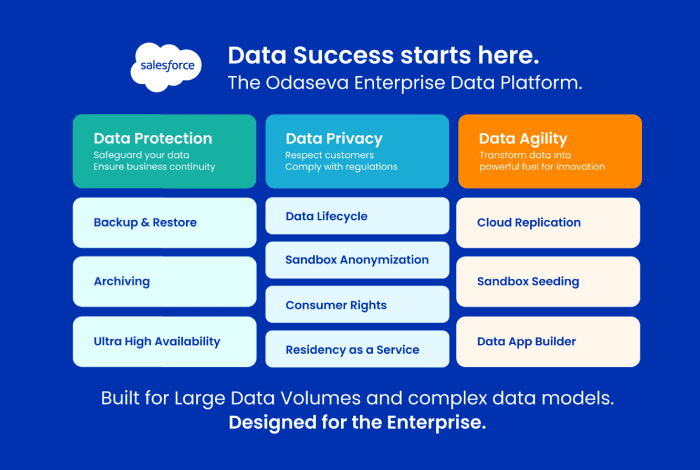
Pricing
Odaseva, like many enterprise-level tools, comes with custom pricing.
G2 rating
4.5/5
Conclusion
Our guide to 12 Salesforce integrations is by no means an extensive article with all Salesforce integrations offered. Not all of the integrations will be relevant to your use cases, and we only scratch the surface when presenting their capabilities.
However, it gives you an understanding of how powerful such integrations could be for streamlining your internal processes and improving your effectiveness.
To find out more about the Userpilot-Salesforce integration, book the demo!



